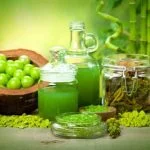Are you looking for a natural way to ease stress, relax your muscles, and relieve pain? Aromatherapy heat packs may be just what you need. These packs are not only soothing but also customizable to suit your preferences. In this article, we will explore the benefits of aromatherapy heat packs, essential oils you can use, materials needed to make them, a step-by-step guide to creating your own, and tips on using them for relaxation and pain relief.
Aromatherapy heat packs are known for their ability to provide comfort and promote well-being. Whether you are dealing with muscle tension, menstrual cramps, or just in need of some relaxation after a long day at work, these packs can work wonders. The combination of heat therapy and aromatherapy from essential oils makes them an effective holistic remedy for various ailments.
When it comes to choosing essential oils for your aromatherapy heat packs, there are numerous options that offer different benefits. From lavender for relaxation to peppermint for headache relief, each oil has its unique properties that can enhance the therapeutic effects of the heat pack.
It’s all about finding the right blend that best suits your needs. Stay tuned as we delve into the world of aromatherapy heat packs and discover how they can become a valuable addition to your self-care routine.
Benefits of Aromatherapy Heat Packs
Choosing the Right Essential Oils
When it comes to making aromatherapy heat packs, the choice of essential oils is crucial. Different essential oils offer various therapeutic benefits, so it’s essential to select the right ones for your specific needs. For relaxation and stress relief, lavender, chamomile, and ylang-ylang are excellent choices. Peppermint and eucalyptus essential oils are perfect for relieving headaches and sinus congestion. Meanwhile, ginger and black pepper oils are great for soothing sore muscles and reducing inflammation.
Blending Essential Oils
To maximize the benefits of aromatherapy heat packs, consider blending different essential oils to create a synergistic effect. You can experiment with various combinations based on your preferences and desired effects. For example, combining lavender with peppermint can be both relaxing and invigorating, perfect for easing tension headaches or menstrual cramps. Remember to research the properties of each essential oil and their potential interactions before creating your blend.
Testing for Allergies
Before using any new essential oil in your aromatherapy heat pack, it’s crucial to perform an allergy test. Dilute a small amount of the oil in a carrier oil (such as sweet almond or jojoba) and apply it to a small patch of skin on your forearm.
Wait 24 hours to check for any allergic reactions before using the oil in your heat pack. This simple test can help prevent potential skin irritation or sensitivities when using aromatherapy heat packs.
Incorporating the right essential oils into your DIY aromatherapy heat packs can enhance their therapeutic benefits, providing you with a customized solution for relaxation, pain relief, or stress management.
Essential Oils for Aromatherapy Heat Packs
When it comes to making aromatherapy heat packs, essential oils play a crucial role in providing the therapeutic benefits that users seek. These natural plant extracts have been used for centuries for their various healing properties and pleasing scents. Here are some popular essential oils that can be used in aromatherapy heat packs:
- Lavender: Known for its calming and relaxing properties, lavender essential oil is often used to promote a good night’s sleep and reduce stress and anxiety.
- Peppermint: With its invigorating and cooling effect, peppermint essential oil is commonly used for relieving headaches, muscle aches, and tension.
- Eucalyptus: This essential oil is valued for its ability to clear the airways and promote easier breathing, making it a great choice for respiratory issues or congestion.
- Chamomile: Renowned for its soothing and anti-inflammatory properties, chamomile essential oil is ideal for providing relief from muscle pain and menstrual cramps.
In addition to these popular choices, other essential oils such as tea tree, rosemary, and citrus oils also offer unique benefits that can be tailored to individual preferences. When selecting essential oils for aromatherapy heat packs, it’s important to consider the desired therapeutic effects as well as any potential allergies or sensitivities.
Once the desired essential oils are chosen, they can be combined with other materials to create effective aromatherapy heat packs that provide both warmth and fragrance. By harnessing the power of these natural extracts, individuals can experience a holistic approach to relaxation and pain relief.
Materials Needed to Make Aromatherapy Heat Packs
Aromatherapy heat packs are a simple and effective way to promote relaxation and relieve muscle pain. Making your own aromatherapy heat packs allows you to customize the scents and materials used, ensuring that it suits your personal preferences. To create your own aromatherapy heat packs, you will need a few basic materials, many of which can be found in your own home or easily purchased at a local craft store.
- Fabric: Choose a soft, durable fabric such as cotton or flannel for the outer layer of the heat pack. The fabric should be able to withstand microwaving without melting or catching fire.
- Thread: Use strong thread that matches the color of your fabric for sewing the heat pack together.
- Rice or Flaxseed: These will serve as the filling for your heat pack. Both rice and flaxseed retain heat well and provide a gentle weight that can help with pain relief.
- Essential Oils: Select high-quality essential oils in scents that are known for their relaxing and therapeutic properties, such as lavender, eucalyptus, or chamomile.
- Sewing Machine or Needle: Depending on your preference and skill level, you can use a sewing machine or hand-sew the edges of your heat pack.
Once you have gathered all the necessary materials, you can begin the process of making your very own custom aromatherapy heat packs. By taking the time to carefully select quality materials, you can ensure that your DIY heat packs will provide long-lasting comfort and relaxation when used.
In addition to saving money by creating your own aromatherapy heat packs, making them yourself allows you to have full control over what goes into the product. This means that you can avoid any potential irritants or allergens that may be present in commercially produced options. Plus, there’s something satisfying about using a crafty approach to create wellness tools for yourself and loved ones.
Step-by-Step Guide to Making Aromatherapy Heat Packs
Aromatherapy heat packs are a wonderful way to enjoy the benefits of aromatherapy while also getting relief from aches and pains. Making your own aromatherapy heat packs can be a fun and rewarding DIY project that allows you to customize the scents and materials to fit your personal preferences.
To make your own aromatherapy heat packs, you will need some basic materials such as fabric, dried herbs or flowers, and essential oils. The type of fabric you use is up to you, but natural fibers like cotton or linen are recommended for their ability to hold heat well.
Additionally, you can choose from a variety of dried herbs and flowers based on their therapeutic properties and pleasant scents. Lavender, chamomile, and peppermint are popular choices for their relaxation and pain-relief benefits.
Once you have gathered your materials, follow these simple steps to create your own aromatherapy heat packs:
- Cut the fabric into squares or rectangles of your desired size.
- Sew three sides of the fabric together to create a pouch, leaving one side open for filling.
- Fill the pouch with a mixture of dried herbs or flowers and a few drops of your chosen essential oils.
- Sew the remaining side of the pouch closed securely.
Using these homemade aromatherapy heat packs is easy – simply heat them in the microwave for a minute or two and then place them on sore muscles or areas in need of relaxation. The warmth will help release the aromatic benefits of the herbs and essential oils, providing a soothing experience for both your body and mind.
Tips on Using Aromatherapy Heat Packs for Relaxation and Pain Relief
Aromatherapy heat packs are not only great for relaxation but also for pain relief. The combination of soothing heat and aromatic essential oils can provide a therapeutic experience that promotes both physical and mental well-being. When using aromatherapy heat packs, there are several tips to keep in mind to enhance their effectiveness.
First and foremost, it is important to choose the right essential oil for your needs. Different essential oils have different properties, so selecting the appropriate one can make a significant difference in achieving the desired results. For example, lavender essential oil is known for its calming and relaxing effects, making it an excellent choice for stress relief and promoting better sleep. On the other hand, peppermint essential oil has cooling properties that can help alleviate headaches and muscle soreness.
In addition to choosing the right essential oil, another tip for using aromatherapy heat packs is to properly heat them according to the instructions provided. Whether it’s through microwaving or heating in an oven, ensuring that the pack reaches the ideal temperature is crucial for experiencing its full benefits. Overheating can not only diminish the aroma of the essential oils but may also cause burns or discomfort when applied to the skin.
Lastly, making time for uninterrupted relaxation while using aromatherapy heat packs is key to maximizing their efficacy. Find a quiet and comfortable place where you can lie down or sit back, allowing yourself to fully unwind while letting the heat and aroma work their magic. Whether you’re using the pack for muscle tension, menstrual cramps, or simply as a stress-relief aid after a long day, dedicating this time solely to self-care can greatly enhance its therapeutic effects.
| Tips | Details |
|---|---|
| Choose the Right Essential Oil | Selecting an appropriate essential oil can make a significant difference in achieving desired results. |
| Properly Heat Aromatherapy Heat Packs | Ensure that the pack reaches optimal temperature according to provided instructions to avoid discomfort or diminished aroma. |
| Dedicate Time for Uninterrupted Relaxation | Finding a quiet and comfortable space while using aromatherapy heat packs can maximize their therapeutic effects. |
Creative Ways to Customize Aromatherapy Heat Packs
After making your own aromatherapy heat pack, you may want to add a personal touch to make it unique. There are several creative ways to customize your heat pack. One option is to add decorative stitching or embroidery to the fabric before sewing it together.
This can give your heat pack a more personalized look and make it stand out. Another creative idea is to use different patterns and colors of fabric for each heat pack, allowing you to create a collection with various designs.
Additionally, you can choose to add extra elements to enhance the aromatherapy experience of your heat pack. For example, consider adding dried herbs or flowers that complement the essential oils you have chosen. Popular options include lavender, chamomile, and eucalyptus, which can further enhance the relaxation and therapeutic benefits of your heat pack.
Moreover, another way to customize your aromatherapy heat pack is by adding a few drops of food coloring to the rice or flaxseed filling before sealing it. This will give your heat pack a pop of color and help differentiate between multiple packs if you choose to make more than one.
Just be sure not to overdo it with the food coloring as it could stain fabrics and skin when heated. These simple customizations can elevate your homemade aromatherapy heat packs and make them even more enjoyable for yourself or as thoughtful gifts for loved ones who would benefit from their soothing effects.
Safety Precautions When Using Aromatherapy Heat Packs
Checking for Allergies and Sensitivities
Before using aromatherapy heat packs, it is essential to perform a patch test to check for any allergies or sensitivities to the essential oils used. Apply a small amount of the diluted essential oil on your skin and wait for at least 24 hours to see if there is any adverse reaction. If there is redness, itching, or irritation, refrain from using that particular essential oil in your aromatherapy heat packs.
Proper Temperature Regulation
When heating the aromatherapy heat pack in the microwave or oven, it’s crucial to follow the instructions provided with the pack carefully. Overheating can lead to burns and injuries. Always test the temperature of the heat pack on a small area of your skin before applying it to a larger area, especially if you have sensitive skin.
Limiting Use and Duration
It’s important not to overuse aromatherapy heat packs, especially in one sitting. It is recommended not to use them for more than 20 minutes at a time, and allowing at least an hour between uses. Prolonged use can lead to skin irritation or burns, so it’s essential to use them in moderation.
By following these safety precautions when using aromatherapy heat packs, you can enjoy their relaxing and therapeutic benefits without risking any harm or injury. Remember that while they provide relief, they should be used responsibly and with care.
Conclusion
In conclusion, aromatherapy heat packs are a wonderful and effective way to promote relaxation, relieve pain, and enhance overall well-being. The combination of soothing heat and the therapeutic properties of essential oils make these packs a versatile tool for self-care. Whether you’re dealing with muscle tension, menstrual cramps, stress, or simply in need of a moment of calm, aromatherapy heat packs offer a natural and holistic solution.
By harnessing the power of essential oils such as lavender, eucalyptus, or peppermint, aromatherapy heat packs provide targeted relief while also promoting a sense of tranquility. The process of making these packs is simple and customizable, allowing you to tailor them to your specific needs and preferences. From choosing the right materials to personalizing the scents and designs, creating your own aromatherapy heat pack can be a rewarding and creative experience.
It’s important to keep in mind the safety precautions when using aromatherapy heat packs to ensure that you can fully enjoy their benefits without any risks. By following proper guidelines for heating and application, as well as being mindful of any potential allergies or sensitivities, you can confidently incorporate aromatherapy heat packs into your self-care routine.
Overall, these packs serve as a powerful tool for nurturing both physical and emotional well-being, offering a comforting remedy that promotes relaxation and healing.
Frequently Asked Questions
How Do You Make a Small Heat Pack?
To make a small heat pack, start by choosing a fabric and cutting it into two equal-sized pieces. Sew three sides together, fill the pack with rice or flaxseed, then sew the final side closed. Microwave for 1-2 minutes to use.
How Do You Make a Heating Pad With Essential Oils?
Making a heating pad with essential oils involves mixing a few drops of essential oil with a carrier oil, such as coconut or jojoba oil. Then, soak a cloth in the mixture and heat it in the microwave for 30 seconds.
What Can I Use Instead of a Heating Pad?
Instead of a heating pad, you can use a hot water bottle filled with warm water, a warm towel or cloth heated in the dryer, or even a sock filled with uncooked rice and microwaved for warmth. These are good alternatives for soothing sore muscles or cramps without needing an electric heating pad.

Are you looking for a natural way to improve your health and wellbeing?
If so, aromatherapy may be the answer for you.





